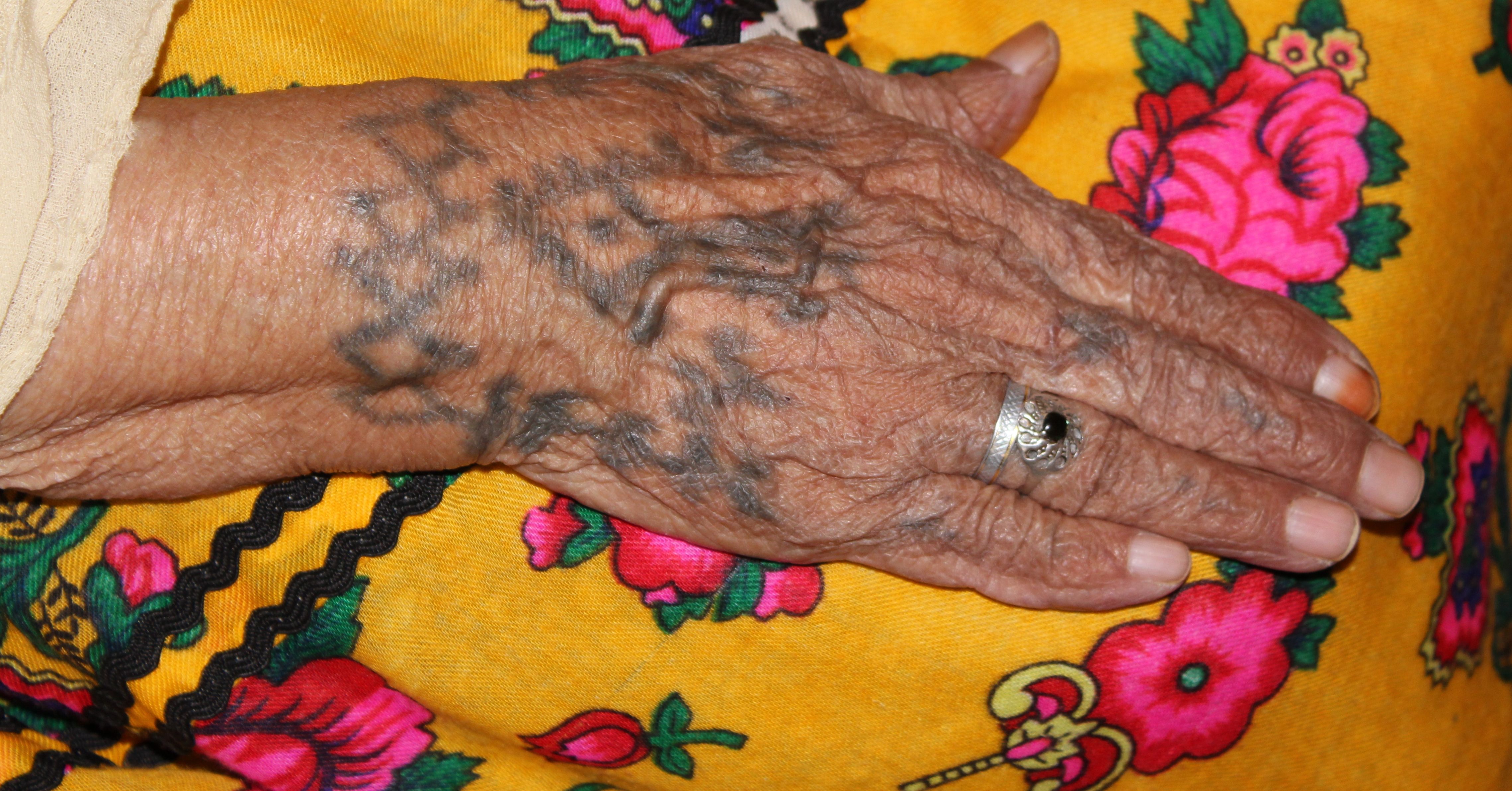In undertaking this project I wanted to uncover the meaning behind the tattoos that the Chaouia women of Algeria carry, but one of my biggest obstacles was that many people in the region have not asked themselves that question. While I might be completely intrigued by the elderly woman with full facial tattoos shopping next to me in the store, for everyone else here the sight of her and others like her is the norm.
In the United States, tattoos, particularly on the face, are often considered counterculture, yet elderly women in Algeria used tattoos to embody their culture. However, that no longer holds true for current tattoo practices in the country. Though not often, I did see younger people with modern-style tattoos, including a teenager with large cursive initials on one side of his chest. I also discovered that men who had participated in the military may have tattoos on their arms, while others who had been imprisoned often had a number tattooed on their forearm.
Twenty-six-year-old Anfal explained to me that it is possible to find young women in Algeria with tattoos too, but not ones at all like the traditional tattoos of older generations.
“I don’t speak with them,” she said, adding that she doesn’t consider young women with tattoos to be “good girls.”
Such examples show that tattooing in Algeria today is also considered counterculture, especially when throwing Islamic culture into the mix – with tattooing practices far different from the traditional one.
Although I still can’t say what the tradition might have meant hundreds of years ago, I did come to understand the significance of the tattoos in the 1930s and 1940s when the current eldest generation of women were often tattooed.
The number one answer I have received is that traditional tattoos signify beauty. While today modern beauty may be attained through make-up and Botox, for women in the Aurés beauty was encapsulated in the tattoos permanently marking their faces.
Several of the tattooed women also said that without tattoos they would be “like a man.” This gender identity piece ties the facial tattoos to beauty via femininity and womanhood – both women and men of the time period considered tattoos signs of beauty.
Still, it is important to note that it is not uncommon for these women to also be marked by traditional tattoos on other parts of their bodies. I found that tattoos on arms, hands, legs, and even breasts held a completely different meaning for the women that was not tied to beauty at all, but rather to health.
One woman, Janat, had tattoos on her right hand and one above her right ankle. When asked the reason for the additional tattoos she explained that she was having trouble becoming pregnant and had been told that the tattoos could be used to promote fertility. Afterwards, she did have children.
Janat was not the only woman I interviewed who received additional tattoos for reasons related to fertility and childbearing. Another woman tattooed her breast after losing several children after birth. (Early childhood death was not uncommon during wartime due to poverty and lack of access to medical care.) After receiving the tattoo, the woman told me that 10 of her children had lived and 10 had died.
Yamina provided another example of tattoos used for health and healing. To alleviate severe pain and swelling a simple line across the wrist was tattooed. She said that after receiving the tattoo her wrist pain was healed.
After hearing so many stories like these, I realized the use of traditional tattoos to promote beauty and health shed light on a practice that was integral to the beliefs, environment, and needs of the time period – yet within the lifetime of these women the cultural meaning of tattoos had completely changed.
